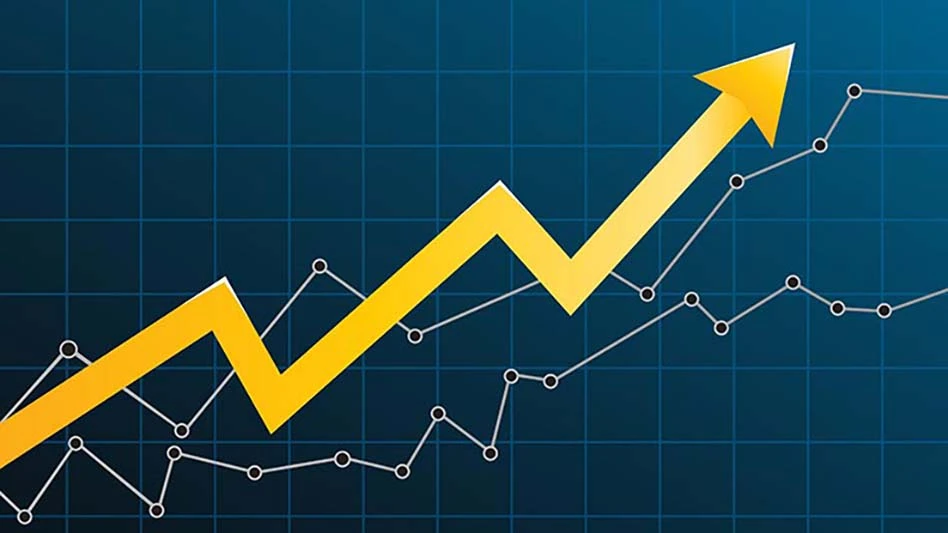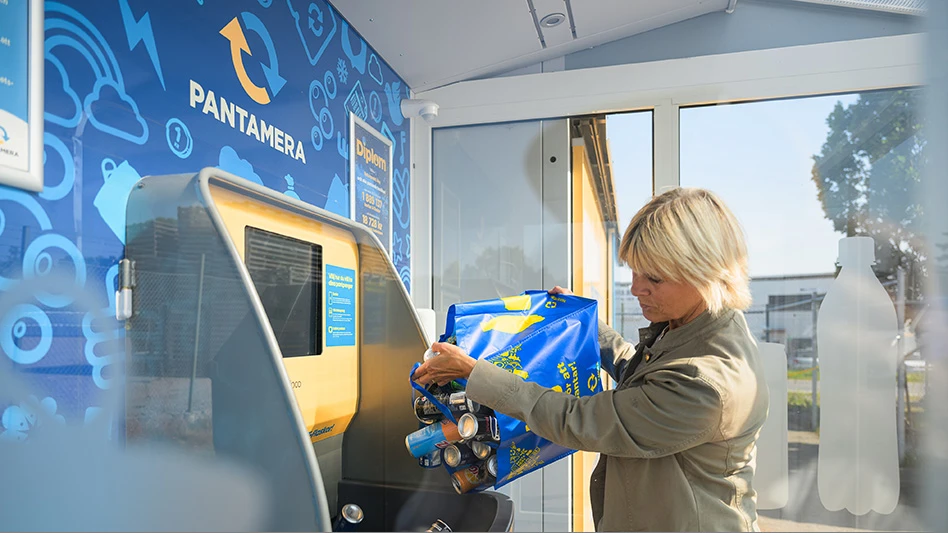For many organizations, environmental concerns are well down the priority list. They are seen as issues to be dealt with in the future, not a concern for today because no one is pressing them on these issues at the moment.
Yet organizations that choose to ignore the need to create a compelling environmental strategy would do well to remember the fable of the three little pigs. The first two pigs, not wanting to put any effort into concerns they felt were not immediate, built their houses out of sticks and straw. When the wolf came to visit, they were unprepared for the consequences. Only the third pig, who had built his house out of durable brick, was safe from all harm.
That is the same decision organizations are faced with today. They may perceive they can cut costs now by ignoring the environment—only to realize that they are burdened with product disposal liability in the future.
| Solving a WEEE Problem |
|
A timetable has been established for implementing the European Commission’s Directive on Waste Electrical and Electronic Equipment (WEEE). Malcolm Wicks, the energy minister for the United Kingdom’s Department of Trade & Industry, announced in July that toasters, laptops and washing machines will now have the chance to meet their maker a greener way. Wicks said, "These proposals are good for consumers, good for responsible producers and good for our environment. By providing a way of ensuring that electronic waste no longer has to go to landfills, manufacturers and importers will have the responsibility to ensure that they plan for both their new and existing products to be recycled rather than dumped. "In announcing full producer responsibility, I want to provide those businesses who have yet to take up their obligation with the certainty they need in order to plan for implementation," Wicks concluded. The consultation, which runs until mid-October, marks the beginning of the final phase of the government’s process for implementing the WEEE Directive. The proposals outlined in the consultation are: • Developing a national distributor takeback program to establish a network of designated collection facilities where consumers can bring their used electronics; • Mandating obligatory registration for producers through approved compliance schemes; • Establishing authorized treatment facilities that will process WEEE and provide evidence to producers on the amount of WEEE received for treatment; • Accrediting reprocessing/recycling facilities that will provide evidence of reprocessing to producers; • Providing end-of-year settlement to ensure producers can meet their obligations via an "exchange" system; and • Developing a voluntary approach for producers to show the cost of handling historical WEEE. |
Despite the extensive media coverage of the past few years, today’s reality still finds quite a few corporations with no awareness of pending environmental legislation or the real cost of lacking an environmental strategy. Yet as more and more states pass legislation to ban mercury and other substances in products and to address end-of-life electronics disposal, it is important that organizations of all sizes make an honest assessment of their own state of affairs.
FACING DOWN OBJECTIONS. Many organizations perceive that their largest, most immediate priorities are not consistent with taking a stand for the environment: shrinking budgets, cutting costs, forging innovation with the goal of improving productivity and the bottom line in an increasingly competitive global marketplace.
Even when end-of-life product issues are addressed, they often become the purview of different divisions, and even individuals, without a clear overarching corporate focus. Nonetheless, companies should heed recent studies, which suggest that environmental concerns have jumped from the bottom to the middle of a 12-item list of topics and issues that play a role in purchasing decisions at medium- and large-sized companies.
It costs a lot to dispose of products now. But the cost will only increase for those not prepared. For example, the cost of recycling monitors is expected to rise 15 percent to 20 percent throughout the next several years. In particular, there has been a huge movement toward recycling lead-heavy CRT displays as people migrate to flat-panel LCD displays. There’s also the international issue. Manufacturers selling products overseas in Europe have to deal with increasingly stringent compliance issues such as those outlined in RoHS (Restriction on Hazardous Substances) Directive.
Environmental legislation in the United States, especially at the state or local city level, isn’t far behind, and in places such as California and New York City, it is even more aggressive.
ALL-ENCOMPASSING STRATEGY. At display maker NEC Display Solutions, the company for which I work, our approach to the environment comes from a philosophy that our entire company lives by. It’s a mindset that doesn’t see the environment as a foe, or a completely separate entity, but rather as a partner.
This mindset embraces technology and environmental innovation as going hand-in-hand. It also envisions daily life not only in terms of how many products are built and sold, but also in the overall quality of people’s lives—not just now but in the future when the products sold today reach their end of life. This is a worldwide focus at NEC. While other suppliers may be focused solely on cost, we believe it’s important to be a technical and environmental leader.
NEC Display addresses environmental and disposal issues as part of the total cost of ownership, which includes the disposal costs for an expected product life. In order to make the most of this initiative, the company has built an environmental strategy around the entire product life-cycle framework. NEC addresses six different areas and its responsibility in each:
• Education/Legislation – The company works in concert with, and educates, consumers, environmental groups, suppliers, media and legislative bodies to engender the most cost-effective legislation and reasonable environmental goals.
• Purchasing (Raw Materials) – It works with partners to leverage environmentally safe materials to build its products while continuing to improve quality and to offer outstanding performance and features.
• Production–It reduces environmental hazards by recycling materials and treating water and other materials for contaminants before disposal; its environmental conformity is part and parcel of ensuring leadership in environmentally friendly manufacturing processes.
• Distribution/Resellers–The monitor-maker keeps partners abreast of environmental issues and assumes the onus for overall environmental compliance. These responsibilities play out by educating consumers and the channel about state and federal legislation, which can create a sizeable individual and business impact if not adequately addressed.
• Sales/Point-of-Purchase–NEC maintains a communication process with customers so they know what they’re purchasing and are aware of the end-of-life issues and costs associated with those purchases; the firm sells extended warranties so that products will be supported longer.
• End-of-Life–It delineates the environmentally sound options for disposition when a user no longer wants the product or seeks to replace it.
INITIATIVES. A product life-cycle strategy is only as valuable as the ways in which it translates into tangible results. Here are just a few environmental programs for which NEC Display has taken a leadership position, especially in educating partners, consumers and the marketplace at large:
• Energy Star and EPEAT–NEC markets its monitors under the logo of the Environmental Protection Agency’s (EPA) EnergyStar program, which denotes energy efficiency and minimal power usage. The company also has been working with state level agencies, the EPA and others to create a new voluntary standard called EPEAT that certifies the amount of hazardous and recycled materials in a product, along with its energy usage, warranty, recycled material content and end-of-life program. This effort has included labeling its products for mercury content for more than eight years. In addition, the company contributed to the specifications and provided data for the tables related to Energy Star 4.1, while authoring the signaling method between computers and monitors for the EPA, which has resulted in a reduction of more than 50 percent in display power consumption throughout the years.
• RoHS Compliance–Compliant with this European Union directive, the entire NEC product line contains plastics free of hazardous materials, such as lead, hex-chrome, cadmium, mercury, PBDE (polybrominated diphenylether) and PBB (polybrominated biphenyl).
• WEEE (Waste Electric and Electronic Equipment)–NEC products comply with this EU directive that controls the disposal of electronic equipment.
• Total Trade Program–This program allows owners to swap old monitors and receive credits toward new ones. It also lowers overall total cost of ownership. Through NEC’s service and warranty processes, the company has recycled 33 million pounds of IT products. NEC maintains 100 percent EPA-compliant recycling methods and protects customers’ organizations from improper disposal liability.
• Re-usage and Recycling–NEC is a founding sponsor of Computers for Schools, a nonprofit organization that refurbishes PCs and displays and turns them over to schools across the country. Ninety percent of PCs and displays that are recycled still work for their recipients. NEC also uses recycled paper for product manual printing and re-sells refurbished components.
Like the third little pig, NEC is committed to the long-term view. We support environmental protection with our actions, not just words, and see recycling/energy conservation as among the top priorities in minimizing the environmental burden. NEC is living proof that environmental leadership and technological innovation don’t have to be an oxymoron.
The author is the vice president of product development and customer service for monitor maker NEC Display Solutions (www.necdisplay.com). He can be reached at ra@necdisplay.com.
Get curated news on YOUR industry.
Enter your email to receive our newsletters.

Explore the October 2006 Issue
Check out more from this issue and find your next story to read.
Latest from Recycling Today
- CP Group announces new senior vice president
- APR publishes Design Guide in French
- AmSty recorded first sales of PolyRenew Styrene in 2024
- PRE says EU’s plastic recycling industry at a breaking point
- Call2Recycle Canada, Staples Professional expand partnership
- Circular Services breaks ground on north Texas MRF
- Tariff uncertainty results in choppy nonferrous scrap flows
- CATL, Ellen MacArthur Foundation establish battery partnership





